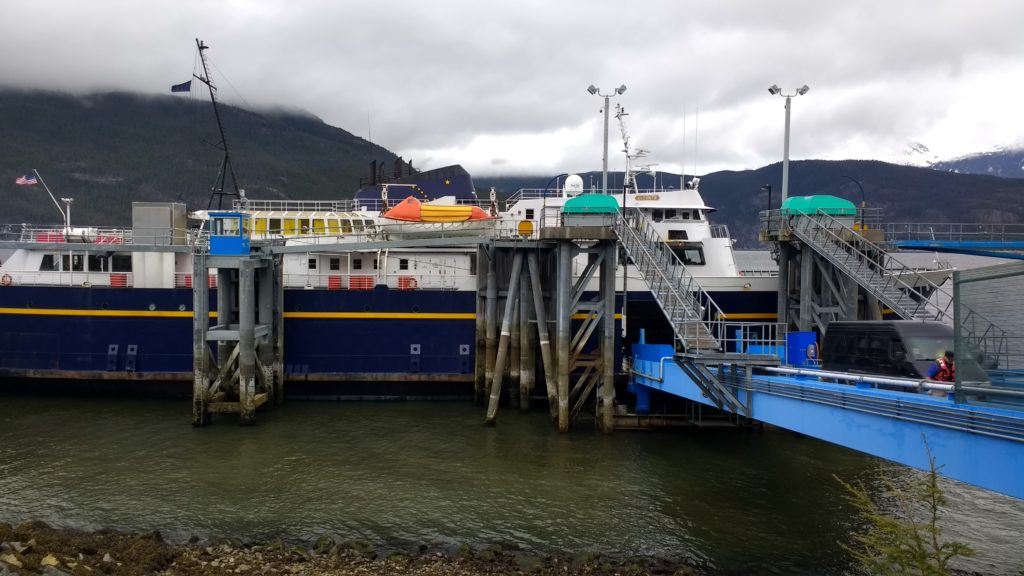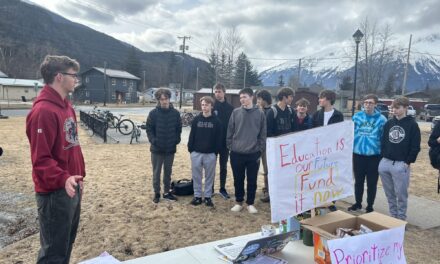A recent change in the Haines Borough law codified the long-standing protocol on how to process dead bodies. KHNS’s Jenn Shelton has more.
The Haines Borough amended the city ordinance about dead bodies last October. It added a provision, which says:
If a family can’t come to an agreement on what to do with a body within 72 hours, then the borough will bury the body at Jones Point Cemetery in Haines. And they will send a bill to the next of kin.
The Assembly voted unanimously to adopt this amendment. But, why?
Firefighter Jenn Walsh explains that the law is not new policy for preparing dead bodies. The policy of the fire department has been unchanged for many years.
Jenn Walsh: “Prior to this, we would ask people, nicely, please to have decisions made within 72 hours. That’s our policy. But now it’s in code and we can reference that. And that makes our jobs a lot easier.”
At first glance, this newly adopted law sounds harsh. Often, it can take more than three days for all family members to travel to Haines. And the grieving family has a lot of things to consider. Like:
Do they prefer to cremate their body? This would require transporting the body to Juneau by either putting it on the ferry or chartering a plane.
Or…do they want to bury their loved one’s body outside of Haines, or bury it locally?
These are big, final decisions. Andthese choices are made in a time of intense grief. So why did the assembly vote to rush people in the first 72 hours of their grief?
I asked this question to Fire Chief Brian Clay several times before he gave me an answer. Understandably, he did not want to be indelicate. His short answer was that, “Bodies decompose.” And, “decomposition is unpleasant.”
But this Haines. This is a town of long answers.
The long answer is found by looking at how a dead body is processed locally. That is, from the moment a human life dies and becomes a body, to the moment the body leaves Haines, or is laid to rest there.
The first step in the process is that the body is transported to the morgue in an ambulance. This is done by the fire department.
The Haines morgue is not like the state-of-the-art morgues you see on T.V. Clay says that it is more appropriate to call the room a “morgue facility” than it is to call it a “morgue.” Clay allowed me to check it out myself, because there were no bodies being processed at the time.
The morgue is a very small, white room in the back of the firehouse. It’s about as big as a king-sized bed. And that’s about all there is to describe.
There’s no metal cabinet with sliding drawers. There’s no refrigeration. There is an air conditioning unit hanging from the ceiling. Not often, but sometimes, the unit stops working. When it is working, it doesn’t keep the room cool enough to dramatically slow down decomposition.
When there is a dead body in the morgue, staff must remember to keep the sliding backdoor of the firehouse propped open, which helps the air conditioner work better. If the door is accidentally shut, the air conditioner is put under extra stress and can turn off.
After arriving at the morgue, this is when the body could be embalmed. Embalming is a process where the body is drained and filled with chemicals, which prolong preservation. But Haines does not have a mortician to embalm bodies. Once at the morgue, the 72 hours for decision- making begins for the family.
No matter what the family decides, they must first fill out a death certificate worksheet, which is provided by the fire department. Fire Chief Clay suggests that everyone should stop by the fire department and obtain a death certificate, so they can prepare their own answers ahead of time. He says it helps his volunteers when plans are made in advance.
Brian Clay: “The other thing is that a lot of family members are out of town. So you need to make sure the out-of-town members understand the same thing so there’s not an infight between somebody in Texas and somebody in Alaska going ‘What are we doing?’.”
Next, if the family decides to embalm, cremate or bury the body outside of Haines, then the fire department will assist the family in making arrangements for transfer. Usually the body goes to Juneau for either cremation or embalming. Sometimes the body is transferred by the highway, or sent to Anchorage for further investigation.
If the family decides to bury the body in Haines, this is where the process becomes dramatically different.
In most of the country, dead bodies are prepared by strangers. But in Haines, dead bodies are cared for by community volunteers. And that is what separates Haines from many other places: dead bodies in Haines are cared for. With a 72-hour limit.
Cynthia Jones, who goes by CJ, has been voluntarily preparing bodies in Haines since the mid-1980s. She walked me through the process.
Volunteers meet the body at the morgue.They ask the family to bring a set of clothes that they want the body to be buried in. If the family wants to prepare the body, then the volunteers walk them through it. She says it’s best to start as soon as possible after the time of death, as soon as rigor mortis passes.
The volunteers clean the body. There’s no sink in the morgue, so the volunteers have to shuttle five-gallon buckets of water from the front of the firehouse to the back room where the morgue is located. Then they dress the body and comb the hair. If a beard needs trimming, they trim it. They do whatever is needed to make the body look nice. CJ says that sometimes it is an easy cleaning, and sometimes it “is not.”
The volunteers provide the family with information for planning the funeral, with everything from organizing pall bearers to choosing a plot at the gravesite. The plots at Jones Cemetery were donated to Haines by the Arctic Brotherhood in Skagway. The plots are free, but the funeral is still costly.
Caskets range from $1,000 – $2,600 and can be bought at Haines Homes Building Supply. However, the fire department has plans for people who want to build their own casket. And firefighter Jenn Walsh says that she can remember several times when the firefighters themselves volunteered to build a casket for the family.
When it’s time for the burial, the fire department drives the body from the morgue, to the funeral service, to the gravesite, free of charge. It’s a community effort.
CJ says that it’s nice to live in a place where you know your community will take care of you when you die.
It is everyone’s hope that the new ordinance will make the volunteers’ jobs a little easier.









